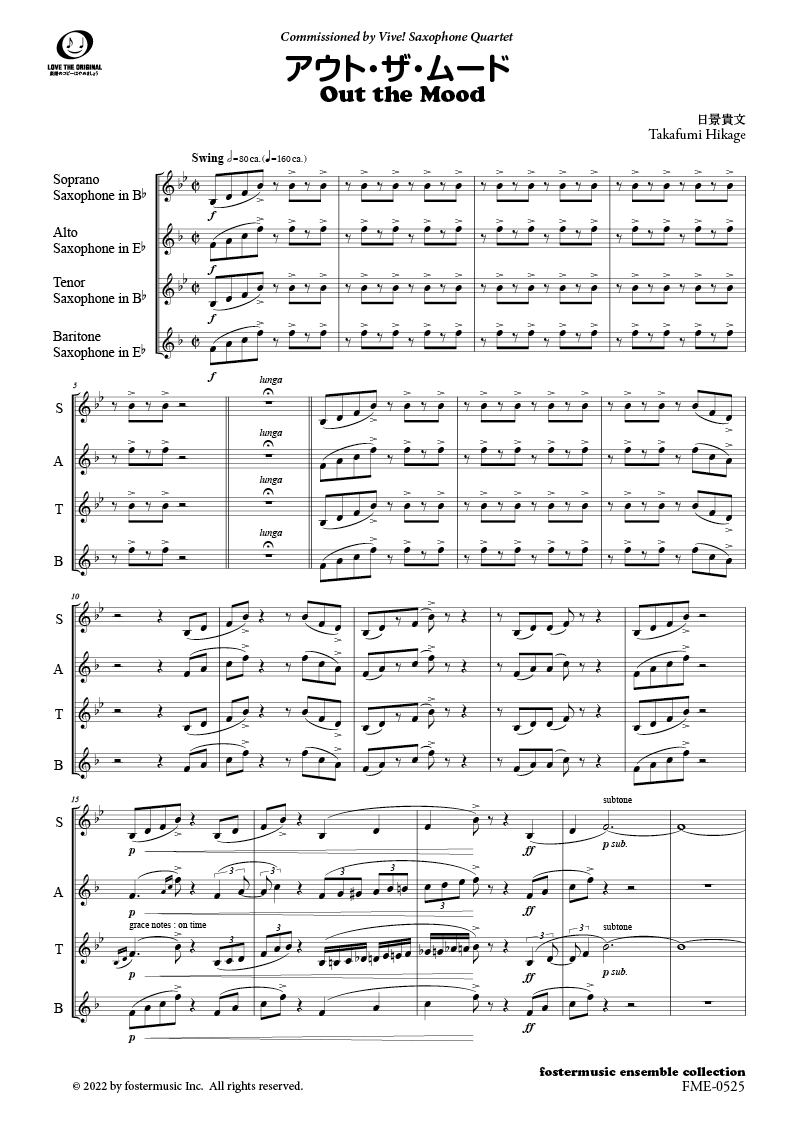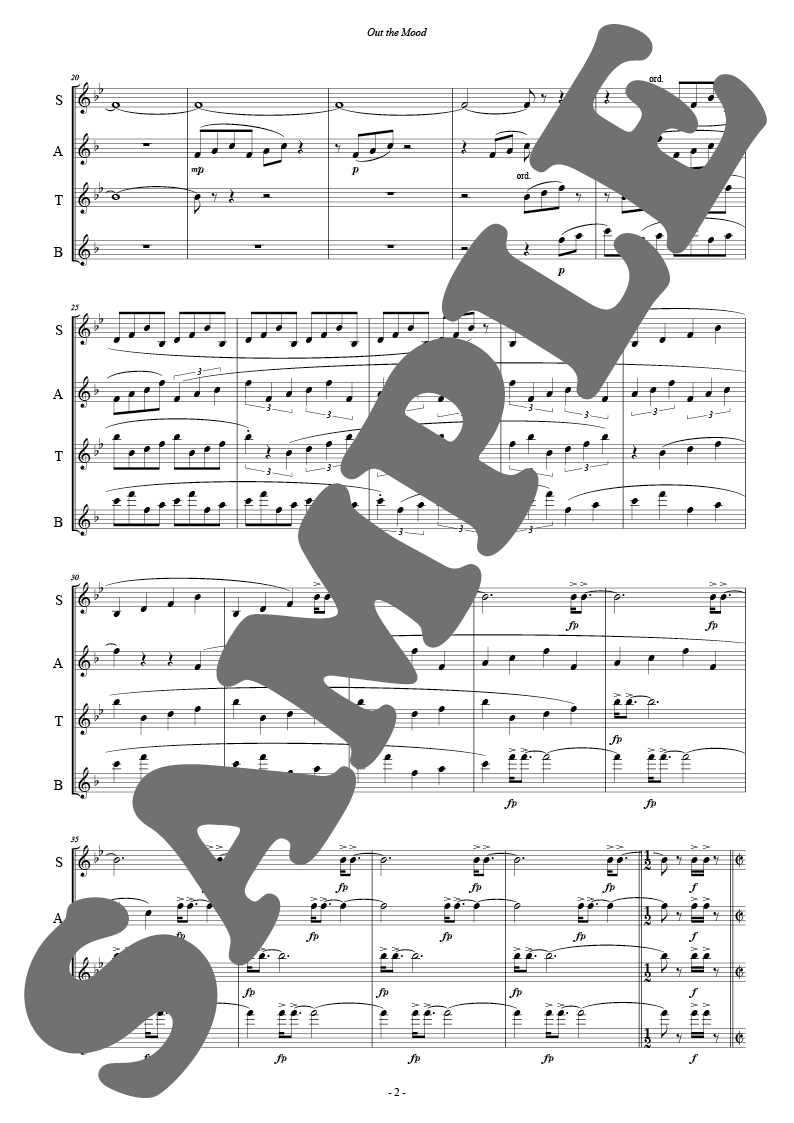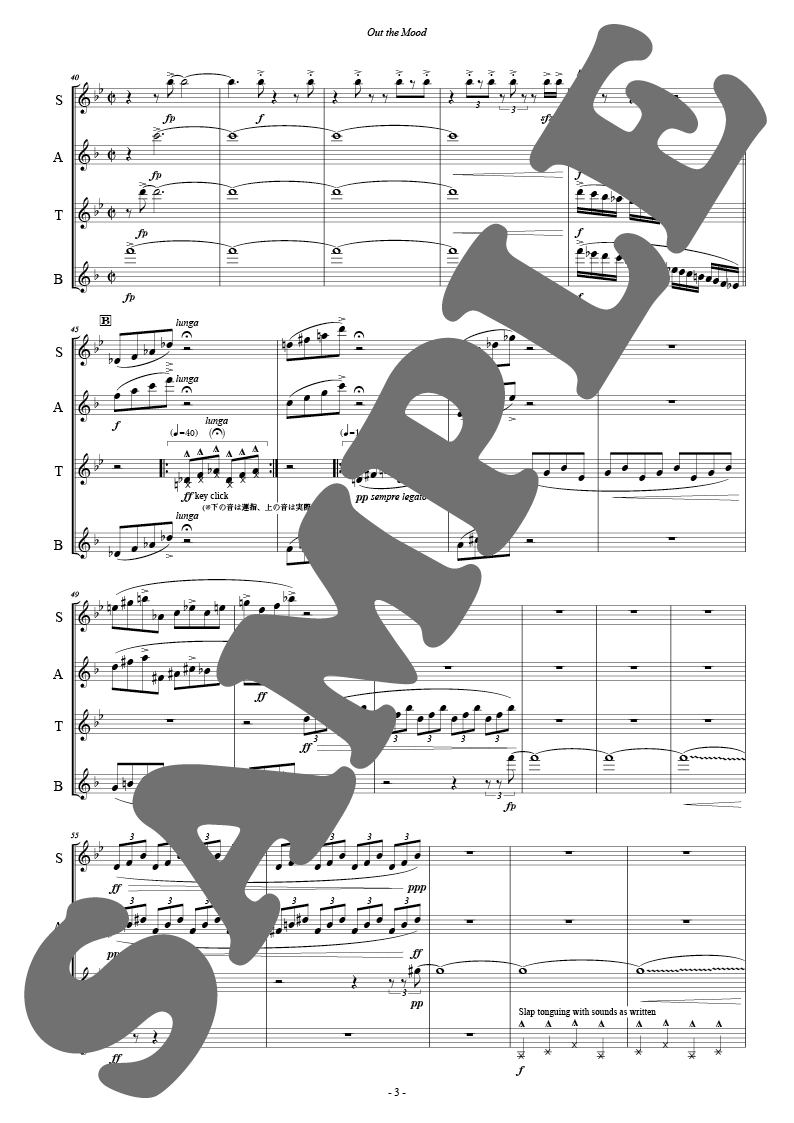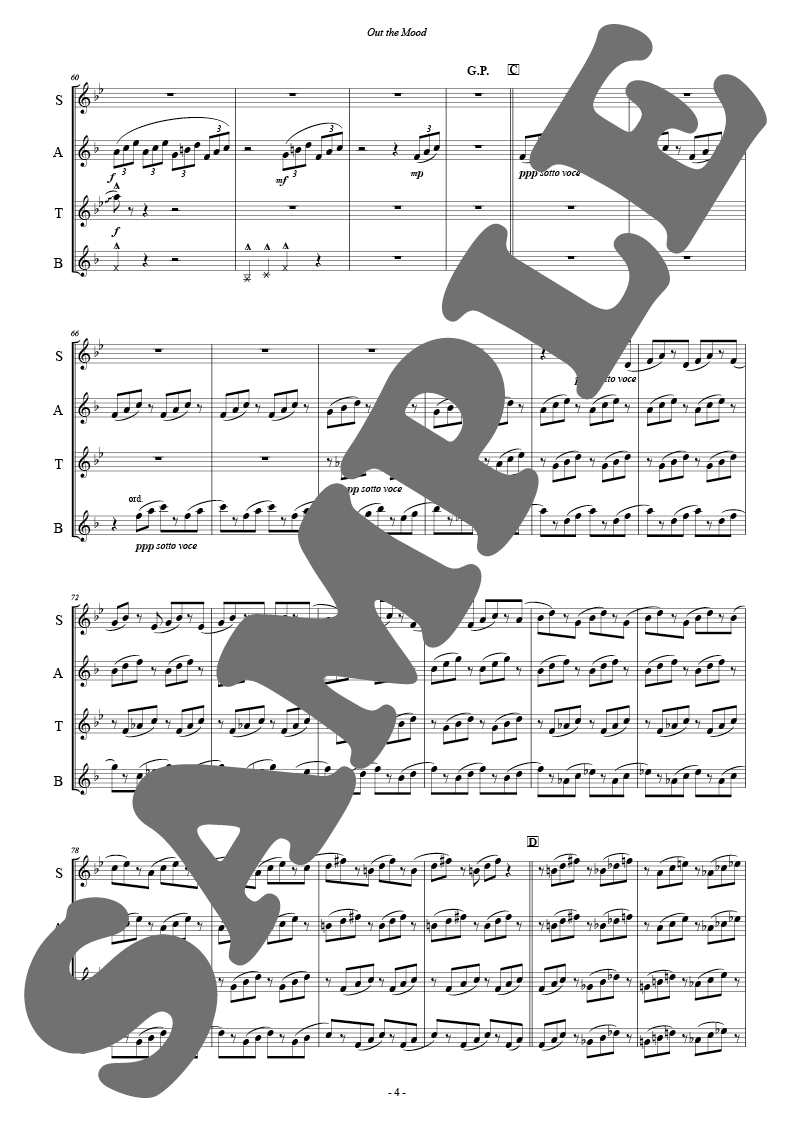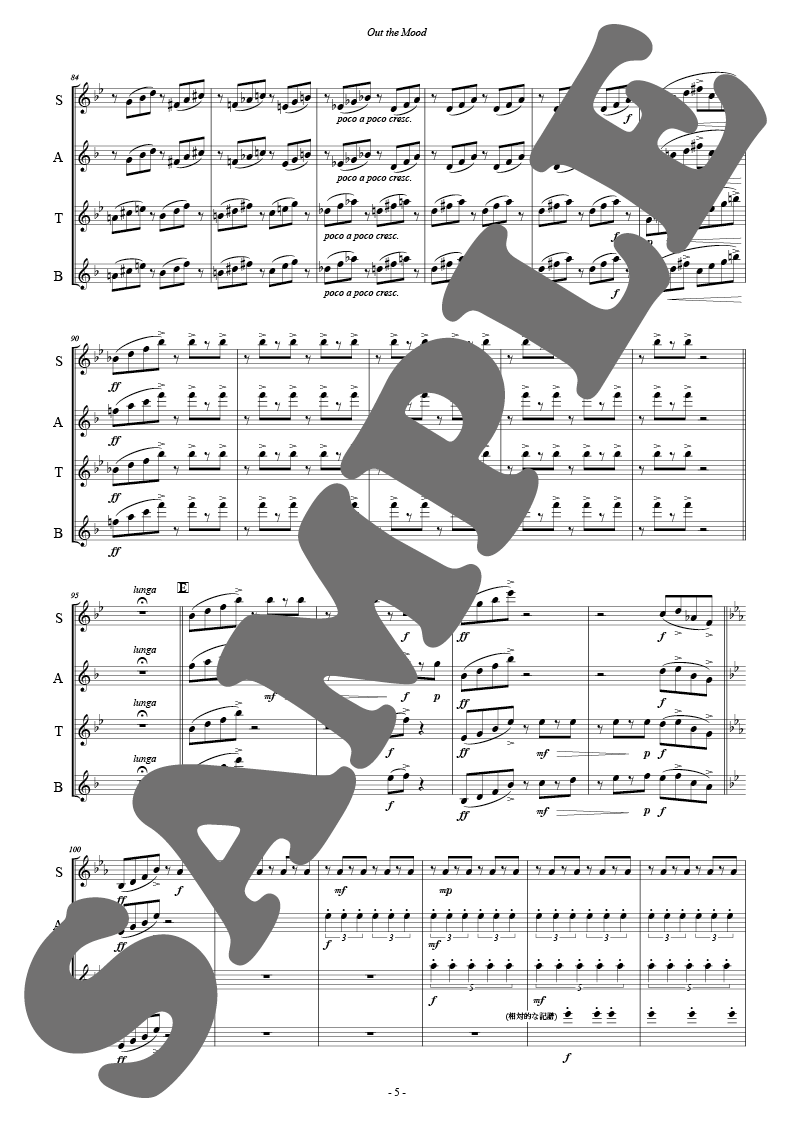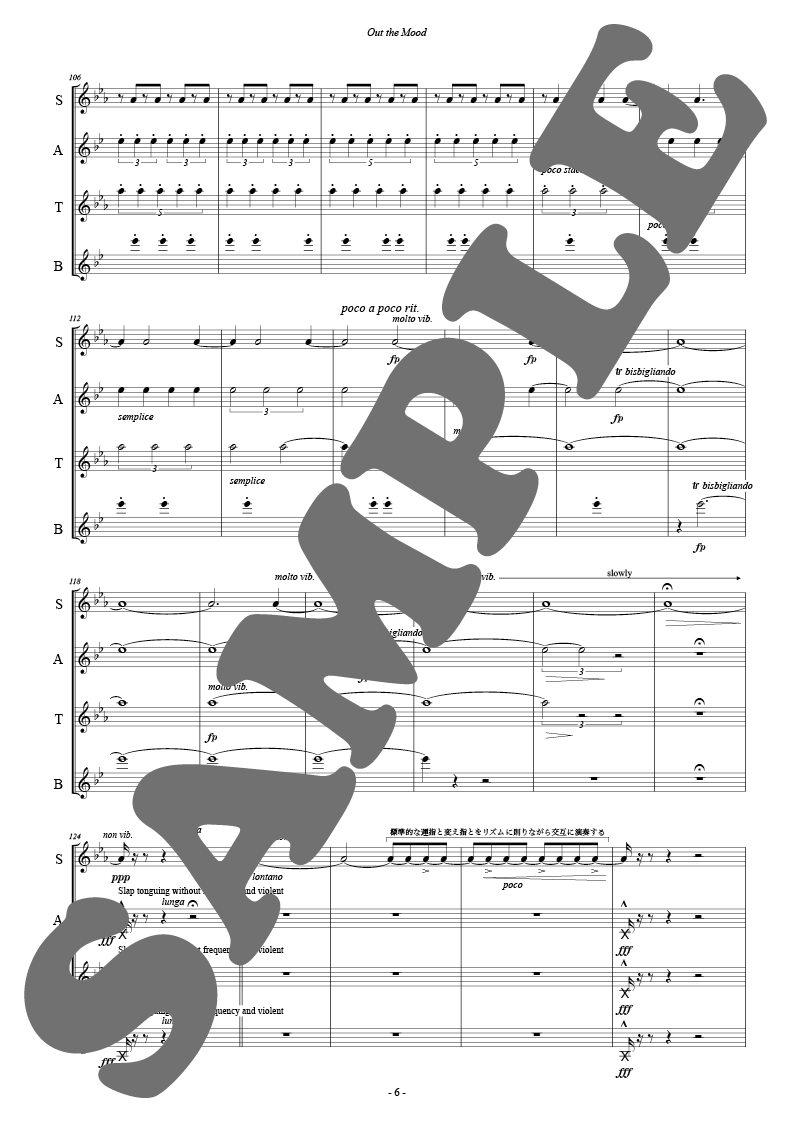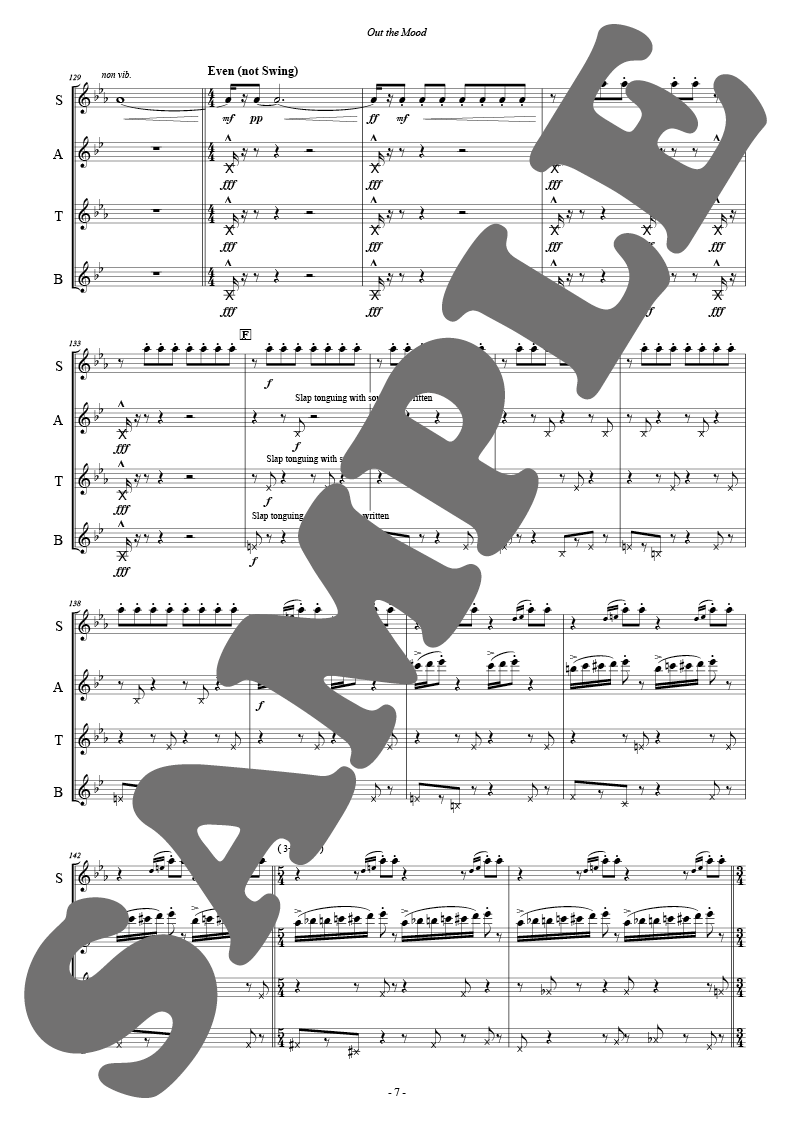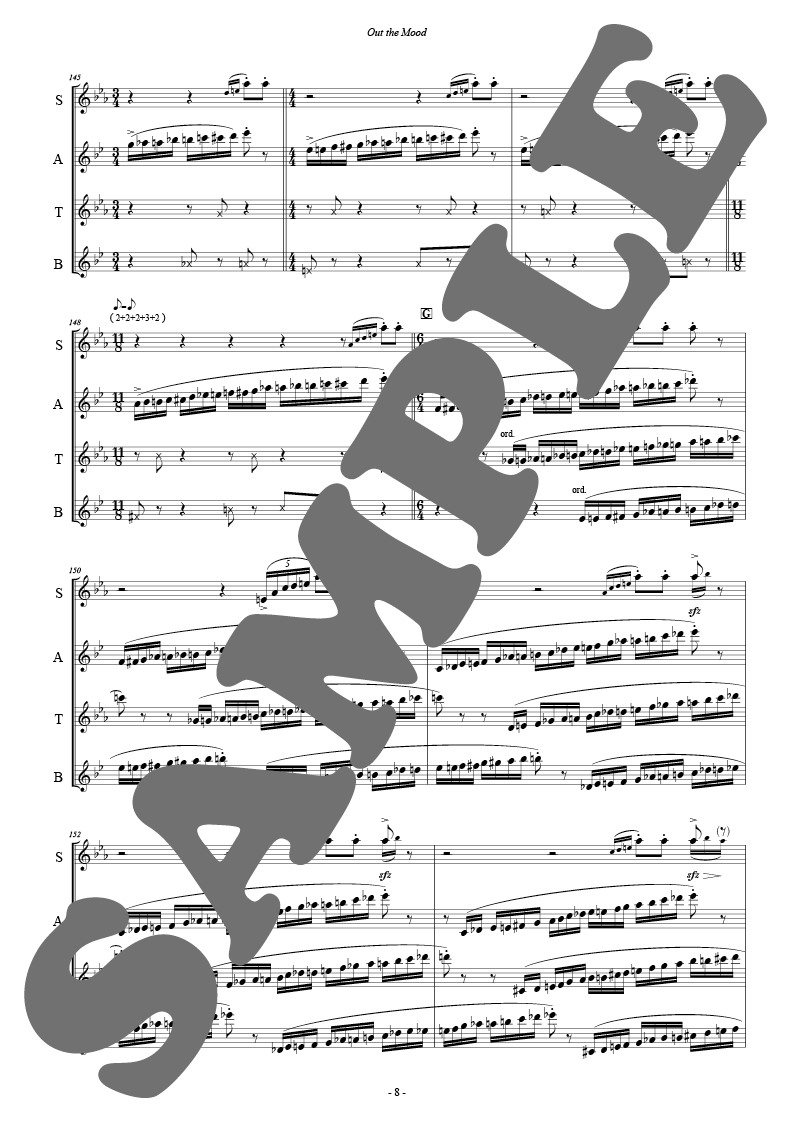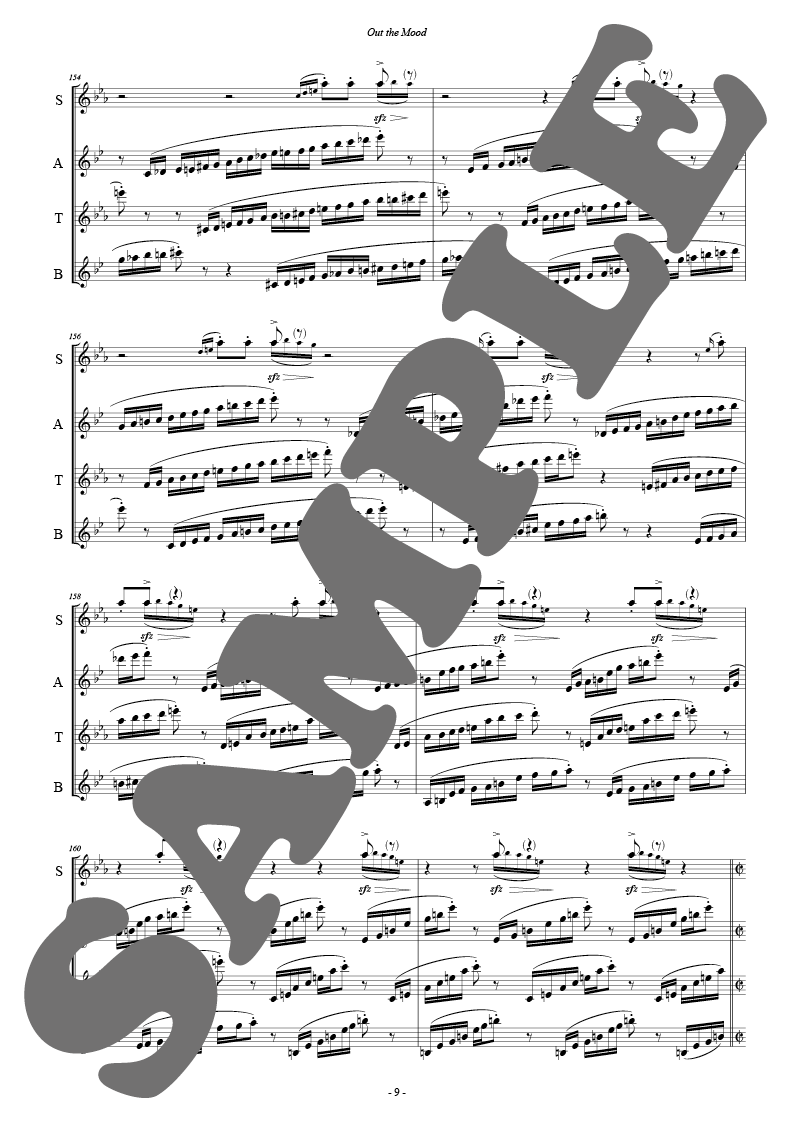12月25日15時を持ちまして、
2025年内出荷の注文受付を終了いたしました。
以降のご注文は年明け
【 2026年1月7日(水)以降順次出荷 】
となります。予めご了承ください。
本年もたくさんのご愛顧を賜りありがとうございました。
よいお年をお迎えください。
アウト・ザ・ムード:日景貴文 [サクソフォン4重奏]
・1配送につき税込11,000円以上のご注文で国内送料無料
・コンビニ後払い、クレジットカード、銀行振込利用可
・[在庫あり]は営業日正午までのご注文で即日出荷
・International Shipping
- 作曲: 日景貴文
- 編成:S.sax./A.sax./T.sax./B.sax.
- 演奏時間:0:05:00
- グレード:5
フォスターミュージック/FME-0525
- 概要
- 編成/曲目
- 補足
- ENGLISH
アウト・ザ・ムード
Vive! Saxophone Quartet リサイタル Vol.19委嘱作品
「自然を円筒形、球体、円錐体で捉えなさい。」
これは、画家ポール・セザンヌの言葉です。対象物を幾何学的な形態に分解して扱うという彼の造形に対するある種の簡略化は、パブロ・ピカソやジョルジュ・ブラックらに大きな影響を与え、のちにキュビスムという新たな美術表現に至るきっかけとなりました。
音楽においてはどうでしょう。ちょうど、リズム・メロディ・ハーモニーから成る「音楽の三要素」という共通認識がありますが、これらをもっと簡略化することはできないか、そもそもこの三要素が満たなければそれはほんとうに音楽として聴こえないのか。本作は、そんな考えから生まれました。
たとえば旋律という要素を考えたときに、「分散和音、(持続を含んだ)連打、さまざまなスケール」という3つのパターンに簡略化し、再構築したらどうでしょう。独特の奥行きと不思議な立体感を生み出したキュビズムのように、音楽表現においてもこの視座は新しい陰影や表現をもたらしてくれるのではないでしょうか。また、同属楽器によるアンサンブルだからこそ、響きの中に生じる微妙な色彩感の変化も強調されることでしょう。
技術的にも高度な内容となっていますが、どこかユーモアを感じさせるような、カジュアルな雰囲気で演奏されることを期待します。(日景貴文)
仕様
- アーティスト
- 作曲: 日景貴文
- 演奏形態
- サクソフォン
- 編成
- 4重奏
- 演奏時間
- 0:05:00
- グレード
- 5
- 商品形態
- アンサンブル楽譜(Full Score & Part)
- 出版社 / 品番
- フォスターミュージック / FME-0525
- JANコード
- 4560318478343
- 発売日(年)
- 2022/08/24
- キーワード
- オリジナル, ,
楽器編成
- Full Score
- Soprano Saxophone
- Alto Saxophone
- Tenor Saxophone
- Baritone Saxophone
日景貴文(Takafumi Hikage)
1990年、埼玉県生まれ。西武学園文理高等学校、及び、尚美学園大学音楽表現学科作曲コースを卒業。第5回日本管打・吹奏楽学会作曲賞佳作、第19回「21世紀の吹奏楽“響宴”」入選、第11回全日本吹奏楽連盟作曲コンクール第1位を受賞。大学在学中は、成績優秀者として3年連続で在学特待生に選出され(うち2度は首席)、大学3年次に大学学長賞を受賞。これまでに作編曲者、指揮者としてラジオ、テレビドラマ、アニメの音楽制作を担当。作曲を川島素晴、愛澤伯友、坂田晃一、久木山直の各氏に、吹奏楽指導法を岡崎明義、合田香の各氏に師事。作編曲のほか、吹奏楽指導、指揮、楽譜浄書、各種コンクール審査員なども行う。大正大学吹奏楽団常任指揮者。
- サイズ
- A4/1cm未満
OUT THE MOOD
"Model nature after the cylinder, the sphere, and the cone."
These famous words were uttered by the painter Paul C zanne. His method of simplifying visual forms by breaking down the subject into geometric shapes had a great influence on Pablo Picasso, Georges Braque, and other artists, eventually heralding a new artistic movement known as cubism.
Can this insight be applied to music as well? It is commonly thought that music comprises three elements, namely rhythm, melody, and harmony, but is it possible to simplify these elements further? Or is it not possible for us to even hear music in the first place if these three elements are lacking? This question serves as the inspiration for this piece.
For instance, what happens if we simplify the element of melody into the three patterns of broken chords, repeated (including sustained) playing, and various scales, before reconstructing it? Like cubism, a movement that gave painting a unique depth and a surreal threedimensional character, such perspectives may generate novel gradations and expressions for the art of musical expression. Moreover, in an ensemble that is made up of similar instruments, subtle tonal variations in the sound produced will be even more prominent.
Although this piece is technically advanced, it is best performed in a casual setting with a humorous approach.
Specifications
- ARTIST
- Composer: Takafumi HIKAGE
- INSTRUMENTATION
- Saxophone / Quartet (4parts)
- DURATION
- 0:05:00
- GRADE
- 5
- PRODUCT TYPE
- Set / ENSEMBLE (Full Score & Part)
- PUBLISHER / Code
- fostermusic Inc. / FME-0525
- JAN
- 4560318478343
- RELEASE
- 2022/08/24
- OVERSEAS SHIPMENT
- Yes
- EUROPEAN PARTS
- Not Included

![アウト・ザ・ムード:日景貴文 [サクソフォン4重奏]](/html/upload/save_image/FME0525_1.png)
